I have time series data where I calculated disease severity in plants at different intervals. My response variable is between 0 & 1 (both exclusive), so beta regression seem to be the most appropriate model. My predictors are weather variables - the aim is to determine the effect of weather variables on disease severity. Here is a reproducible example.
df <- structure(
list(
year = structure(
c(1L, 2L, 3L, 5L, 4L, 6L, 7L,
8L, 9L, 10L),
.Label = c(
"2007",
"2012",
"2013",
"2014",
"2014.1",
"2015.1",
"2015.2",
"2016",
"2017",
"2020"
),
class = "factor"
),
mean_rh = c(
83.9025107032967,
86.3309364921875,
78.7225209283154,
82.3598611111111,
77.8125490392157,
77.5694460507813,
77.340364207483,
78.601888359589,
77.9234626042403,
79.1268228283582
),
mean_temp = c(
8.06137667087912,
3.75335204210526,
8.39571386344086,
7.57235900444444,
10.5797098501961,
8.52468121914062,
9.63416591190476,
12.2749429150685,
9.65211886219081,
10.1620900981343
),
mean_ws = c(
1.84656288406593,
2.0747284924812,
1.92455694623656,
2.12702791944444,
1.91802733215686,
1.77915314179687,
1.71631475340136,
1.78024162876712,
1.45554503710247,
1.60409589440299
),
total_rain = c(
469.5,
367.1,
509.3,
358.7,
562.3,
547.6,
756.4,
789.5,
640.5,
665.1
),
severity = c(
0.81667,
0.01325,
0.06125,
0.81667,
0.0198,
0.0623,
0.0035,
0.00475,
0.885,
0.0348
)
),
class = c("grouped_df", "tbl_df", "tbl", "data.frame"),
row.names = c(NA,-10L),
groups = structure(
list(
year = structure(
1:10,
.Label = c(
"2007",
"2012",
"2013",
"2014",
"2014.1",
"2015.1",
"2015.2",
"2016",
"2017",
"2020"
),
class = "factor"
),
.rows = structure(
list(1L,
2L, 3L, 5L, 4L, 6L, 7L, 8L, 9L, 10L),
ptype = integer(0),
class = c("vctrs_list_of",
"vctrs_vctr", "list")
)
),
row.names = c(NA,-10L),
class = c("tbl_df",
"tbl", "data.frame"),
.drop = TRUE
)
)
My model is below
mod05 <-
betareg(severity_ps ~ mean_temp + mean_ws + total_rain + mean_rh,
data = dat_preplanting)
summary(mod05)
However, when I checked the model residual autocorrelation using the acf() function, the plot is showing very high temporal autocorrelation.
However, when I check partial autocorrelation using pacf(mod05$residuals) function, no autocorrelation is detected.
My questions are,
Is there autocorrelation problem if acf plot is showing autocorrelation but pacf plot is not?
How to do I account for temporal autocorrelation in
betaregR package? I checked the documentation but didn't find anything.
I tried to fit the model using glmmTMB & gam, including year as a random effect but the model failed to converge, suggesting that I have very limited degree of freedom. So I really need to find a way to account for temporal autocorrelation in betareg package. Thanks for any assistance.
